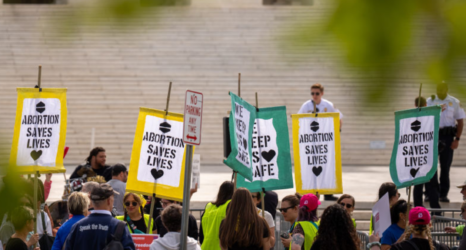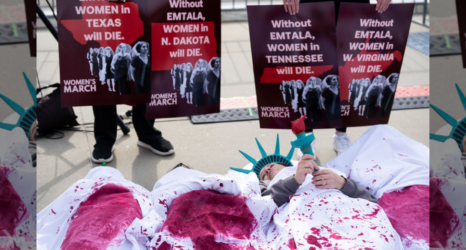Last Friday, the Planned Parenthood clinic in Colorado Springs, Colo. became the site of an hours-long standoff between police and a gunman, resulting in three deaths—including a police officer—and many others injured. In interviews with investigators following the attacks, suspected shooter Robert Lewis Dear spoke of “baby parts” and expressed anti-abortion sentiments.
What many following the case may not realize is that extreme violence impacts 1 in 5 clinics across the country, and threats against reproductive health clinics have been increasing in frequency over the last four years.
Earlier this year, Ms. reported on a survey by the Feminist Majority Foundation’s National Clinic Access Project, which found a dramatic escalation in threats. More than 51 percent of reproductive health clinics and their staff reported experiencing threats and intimidation, such as stalking, harassment at home and at work, and having WANTED-style posters with doctors’ names and home addresses plastered online and in public. In 2009, a little more than one-quarter of clinics reported similar threats.
The survey also found that 19.7 percent of clinics experienced severe violence, including blockades, invasions, bombings, arson, chemical attacks, gunfire and more.
“This attack on Planned Parenthood is just the latest in a string of threats followed by violent incidents,” says Katherine Spillar, executive director of the Feminist Majority Foundation (and executive editor of Ms.). “Prosecuting serious threats against clinics before they become violent acts—like the one in Colorado Springs—is critical to stopping this violence.”
Spillar continues, “As investigators pursue the case in Colorado Springs, it’s critical that the link between threats and actual violence is examined, and that the possible connections between perpetrators and the network of anti-abortion extremists is investigated.” The Planned Parenthood attack is not an isolated incident, and, as Ms. reported after the murder of Dr. Tiller, many anti-abortion extremists, including Michael Bray (pictured above), are part of a network bent on rolling back women’s access to abortion—by any means necessary.
Said Spillar in a statement,
Contrary to some media reports, the attack on the Colorado Springs clinic cannot be passed off as the act of a so-called ‘loner,’ or lone wolf, or an ‘unstable‘ man who was ‘off the grid.’ What little is known about the shooter, Robert Lewis Dear, raises alarm bells in his resemblance to other violent anti-abortion extremists. His anti-government views, survivalist lifestyle, and his history of violence, petty run-ins with law enforcement and use of illegal drugs fit the profile of other extremists who have been convicted of murder and attempted murder of abortion providers.
“This lethal attack must be viewed with a lens also focusing on the nationwide campaign of threats and violence against abortion providers,” says Eleanor Smeal, FMF president (and publisher of Ms.). “We cannot wait for another deadly attack before we start asking questions about the larger campaign of terror and violence against abortion providers. Rather than jumping to the conclusion of a lone wolf, we must determine if this wolf ran in a pack. Quite simply, wolves normally run in packs and the amount of threats hardly could be carried out by one lone wolf.”
The survey of 242 clinics by FMF (publisher of Ms.) shows that nearly 18 percent of clinics found that their doctors’ pictures and personal information had been posted online, while 8.7 percent of clinics reported that doctors had been stalked.
“The spike in serious threats and coordinated intimidation by extremists is of grave concern,” says duVergne Gaines, director of the National Clinic Access Project. “We know there is a connection between threats like WANTED-style posters, residential targeting of physicians and serious violence, because these types of threats preceded the murders of doctors in the ’90s and Dr. [George] Tiller in 2009.”
Twenty-eight percent of responding clinics reported that pamphlets featuring photos of their doctors and clinic staff had been distributed, including some titled “The Killers Among Us,” and the use of WANTED-style posters—like those pictured below—was reported by 7.7 percent of clinics.
According to the National Clinic Violence Survey,
Beginning in the early 1990s, an undeniable pattern emerged between the use of WANTED posters and the murder of the doctors named on the posters. Drs. Gunn, Britton, Slepian and Tiller were all murdered by anti-abortion extremists; all had been featured prior to their murder on WANTED posters with their home and clinic addresses and, in some cases, their photographs.
“More than four decades after the Supreme Court ruled abortion legal,” says Smeal, “doctors and clinic workers should not have to fear extremists’ attacks as they provide critical women’s health care.”





